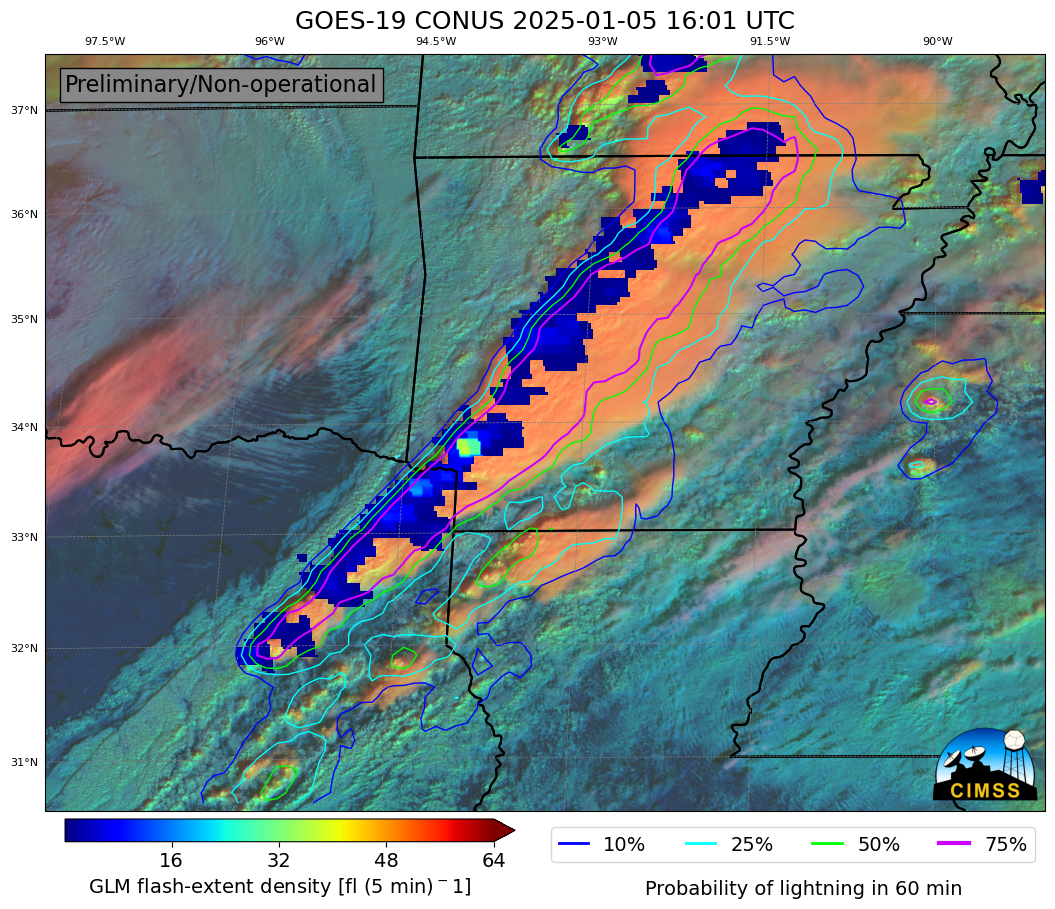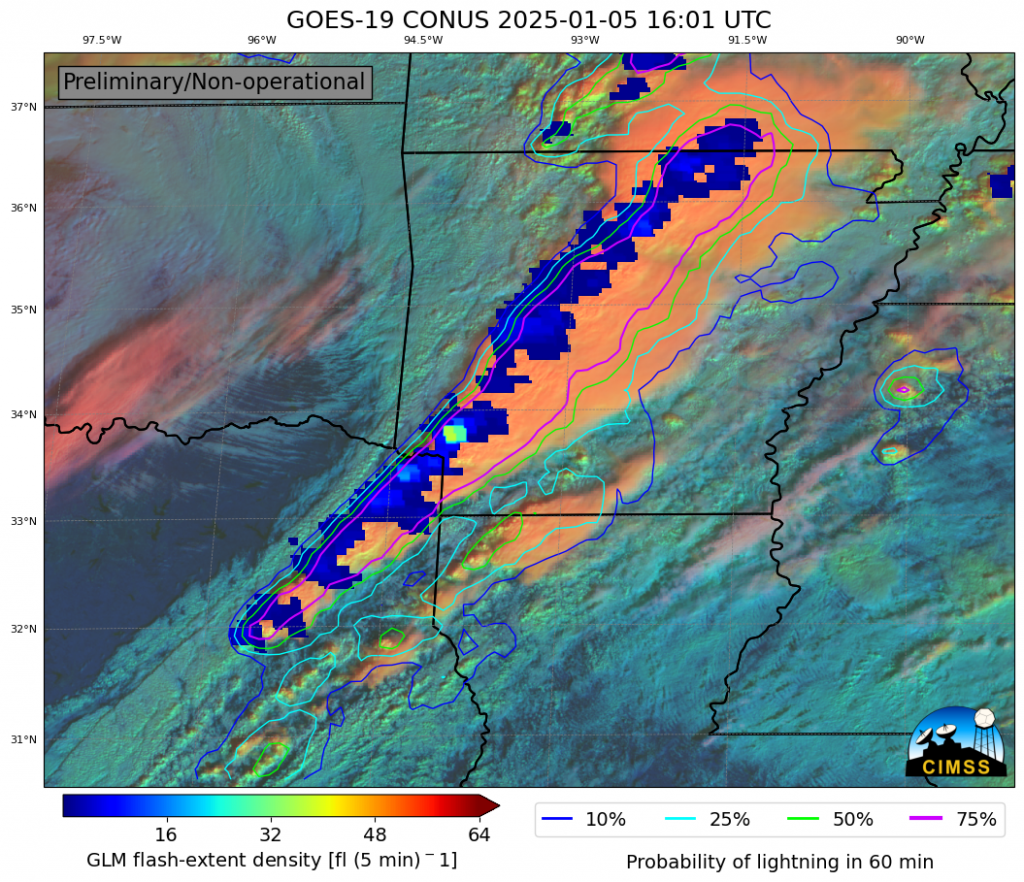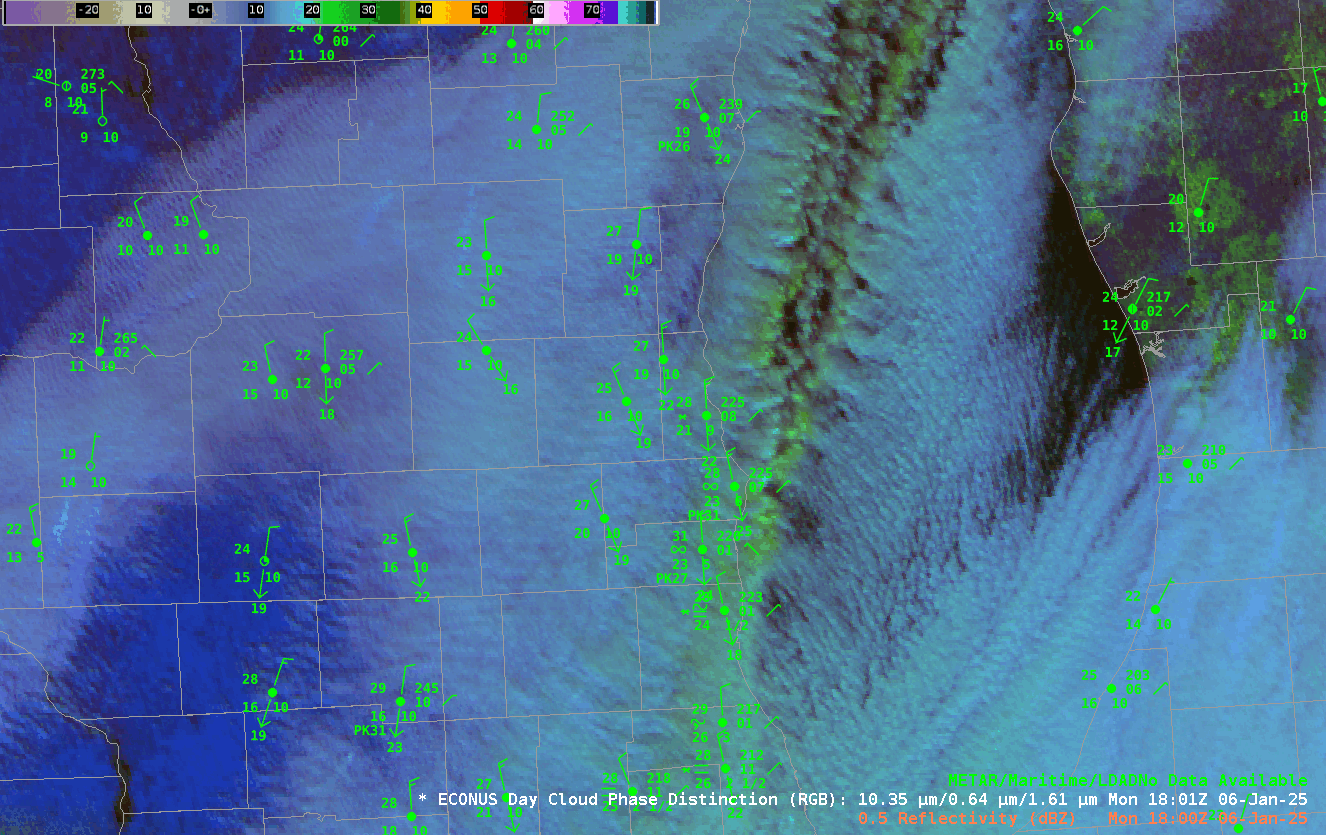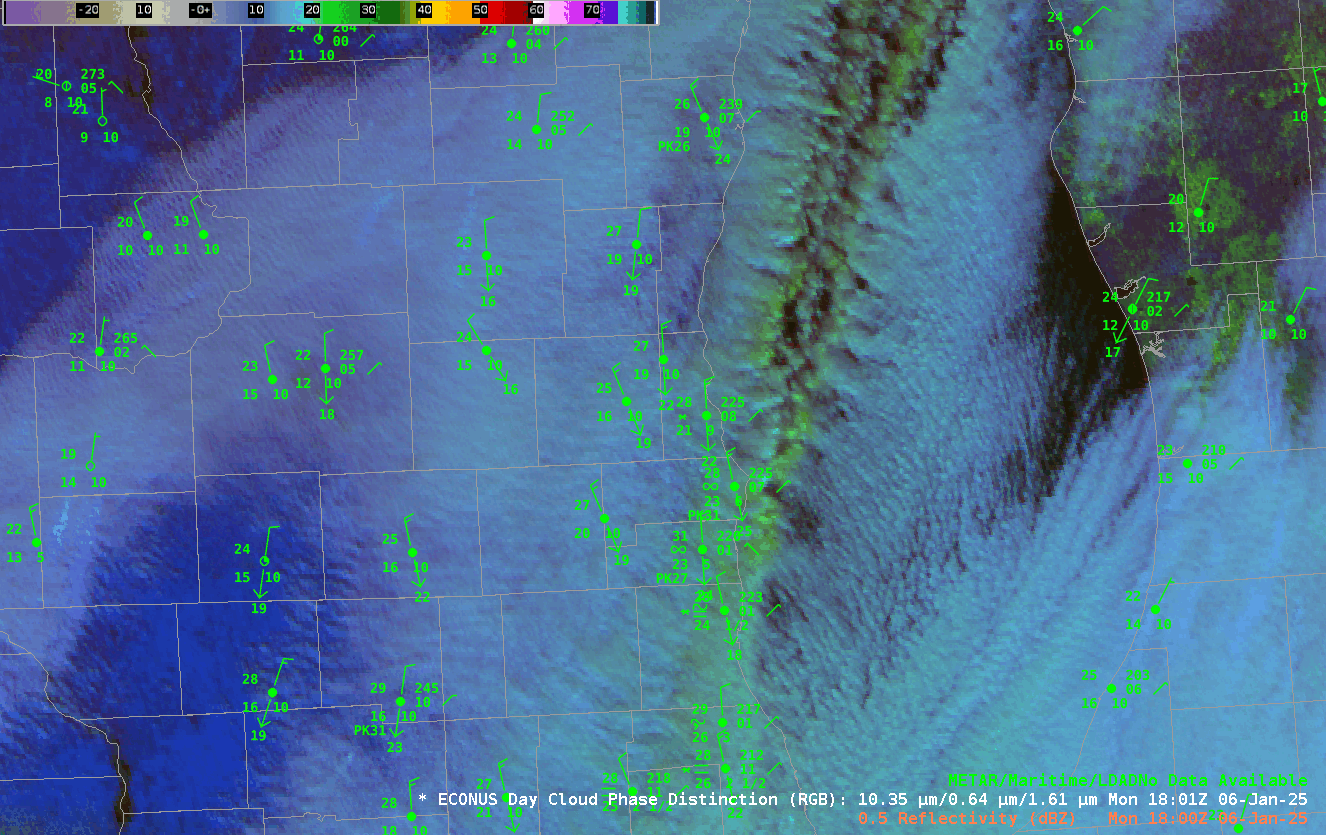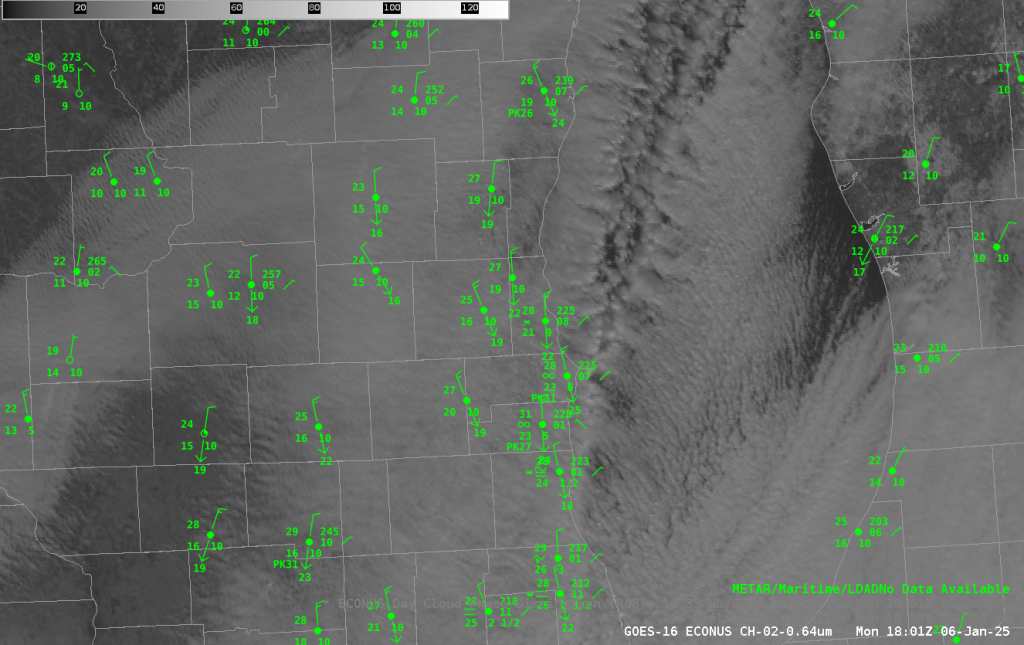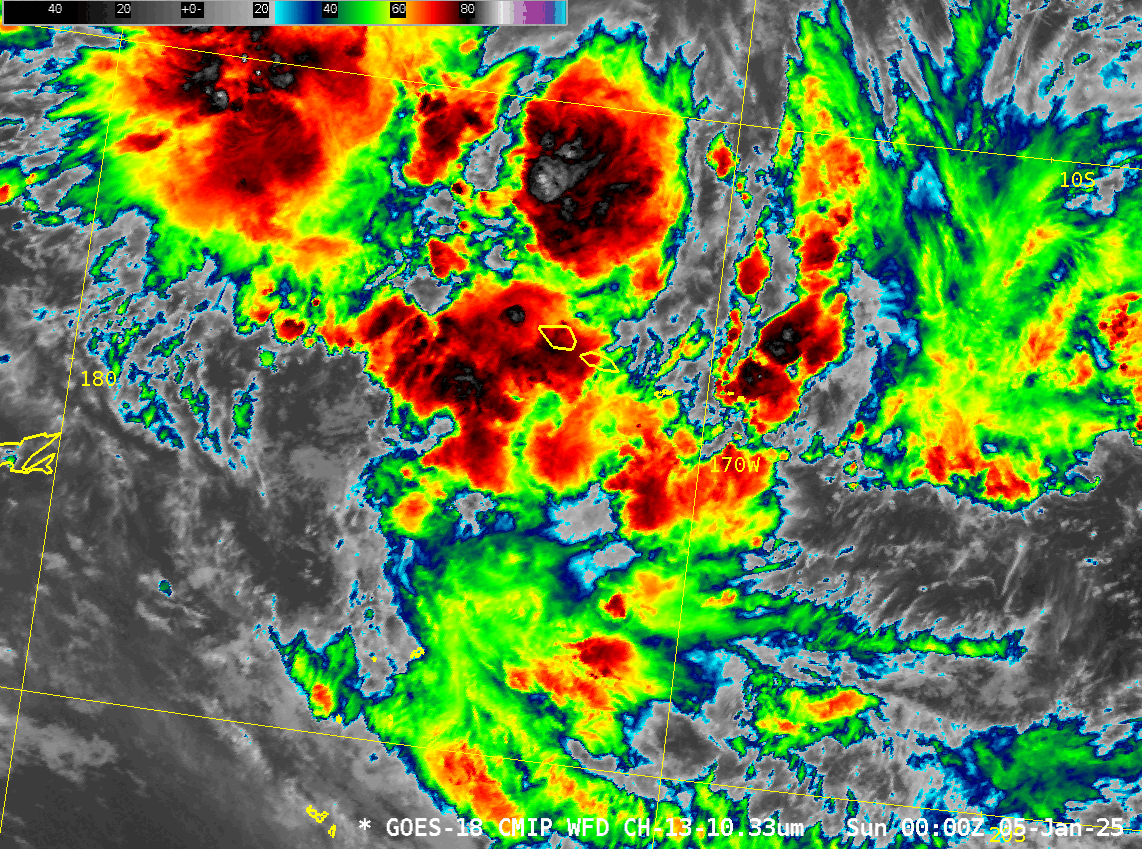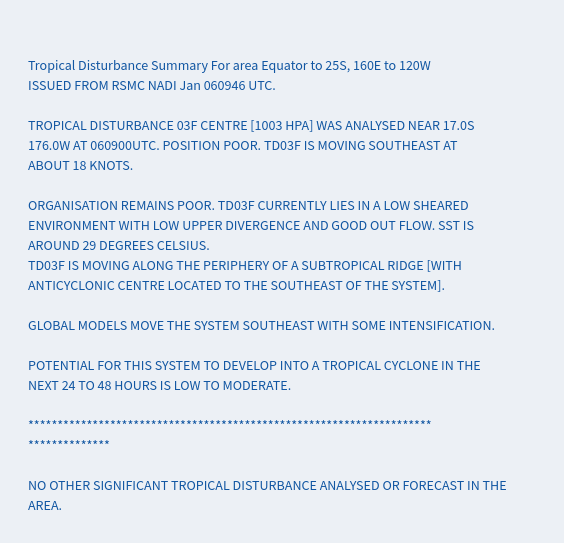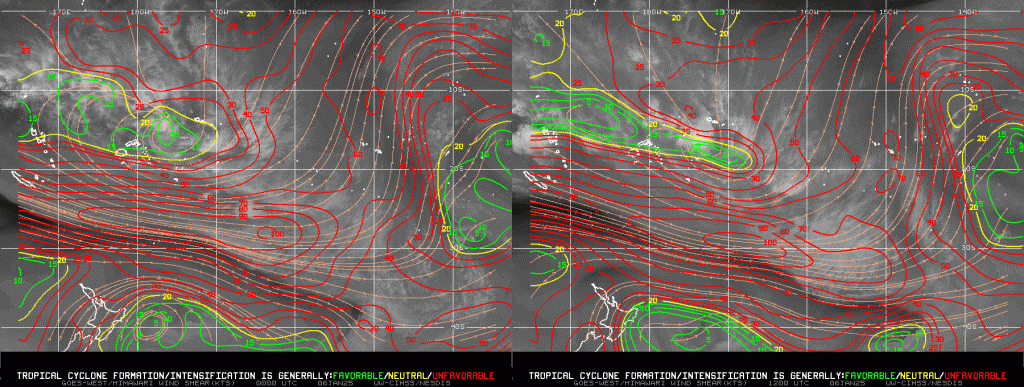
1-minute Mesoscale Domain Sector GOES-18 (GOES-West) Shortwave Infrared (3.9 µm) along with Red Visible (0.64 µm) + Fire Mask derived product images (above) displayed a pronounced thermal signature associated with the Palisades Fire located between Malibu and Santa Monica in Los Angeles County, California on 7th January 2025. The 3.9 µm infrared brightness temperatures at... Read More

1-minute GOES-18 Shortwave Infrared (3.9 µm) images (left) and Red Visible (0.64 µm) + Fire Mask derived product (right), with 15-minute METAR surface reports plotted in yellow, from 1801 UTC on 7th January to 0000 UTC on 8th January; Interstate highways are plotted in red [click to play MP4 animation]
1-minute
Mesoscale Domain Sector GOES-18
(GOES-West) Shortwave Infrared (3.9 µm) along with Red Visible (0.64 µm) + Fire Mask derived product images
(above) displayed a pronounced thermal signature associated with the
Palisades Fire located between Malibu and Santa Monica in Los Angeles County, California on
7th January 2025. The 3.9 µm infrared brightness temperatures at the fire origin location began to increase at 1824 UTC, then rapidly increased in intensity and areal coverage for the next several hours as the wildfire exhibited extreme behavior (due to
dry fuels and
strong Santa Ana winds). The increase in 3.9 µm infrared brightness temperatures at the 1824 UTC fire start time can be seen within the red box below (the
NGFS-identified fire start time was
1825 UTC).
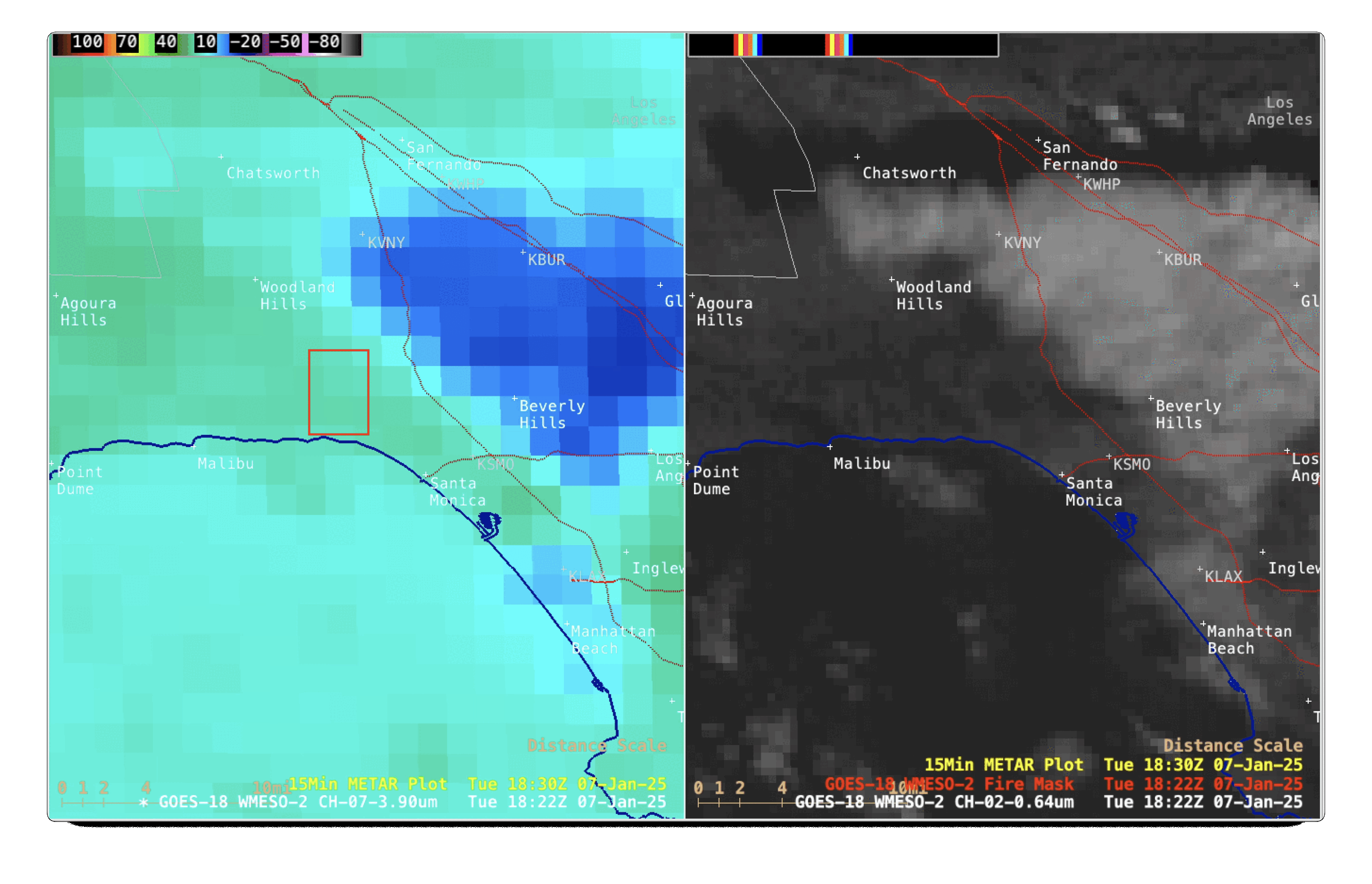
1-minute GOES-18 Shortwave Infrared (3.9 µm) images (left) and Red Visible (0.64 µm) + Fire Mask derived product (right), from 1822-1826 UTC on 7th January; Interstate highways are plotted in red [click to enlarge]
1-minute GOES-18 True Color RGB images from the
CSPP GeoSphere site
(below) showed the offshore transport of smoke from the Palisades Fire — and a few pyrocumulus jumps in the vicinity the wildfire were seen later in the day.

1-minute GOES-18 True Color RGB images, from 1824 UTC on 7th January to 0000 UTC on 8th January [click to play MP4 animation]
===== 8th January Update =====
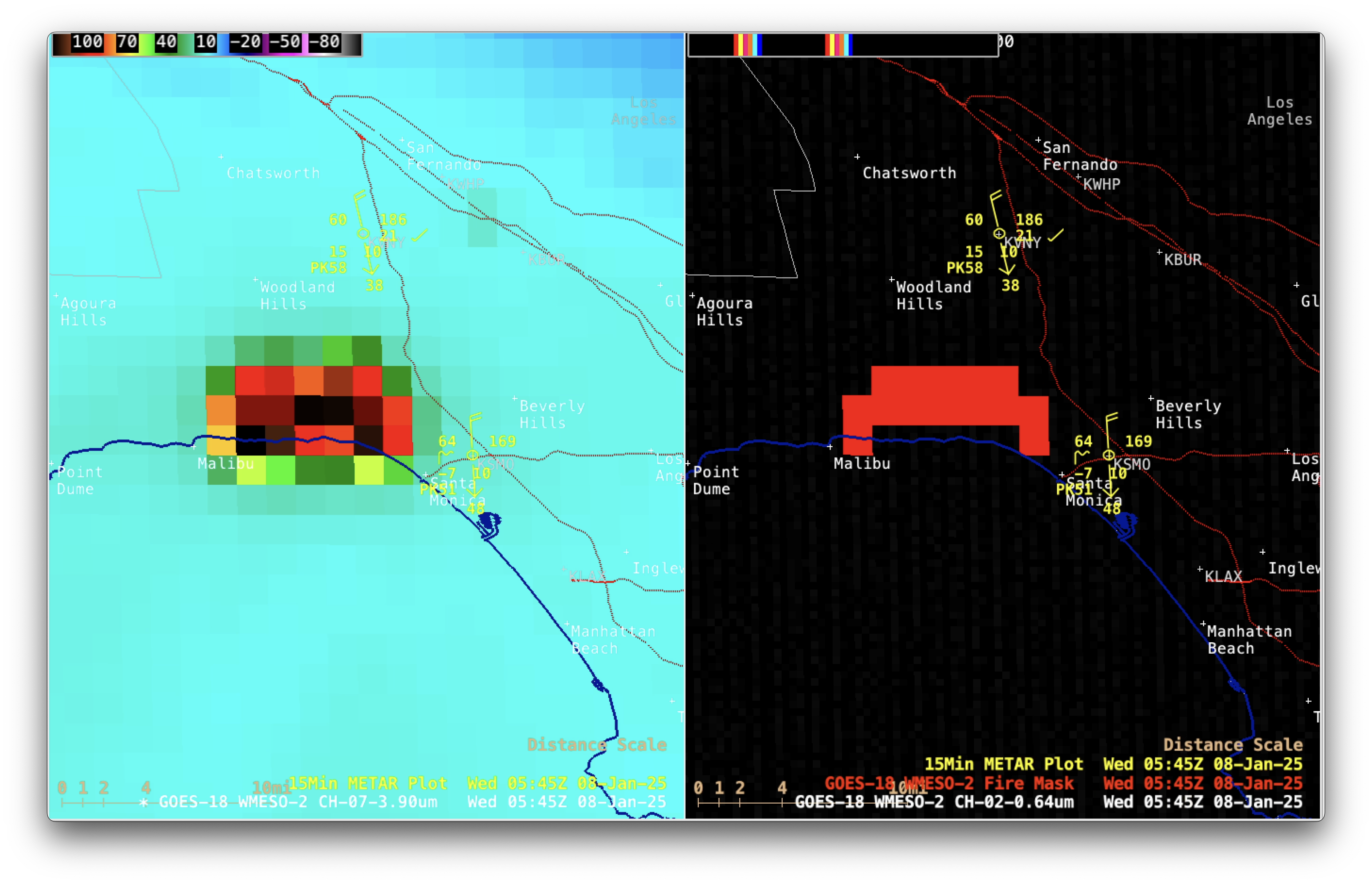
1-minute GOES-18 Shortwave Infrared (3.9 µm) images (left) and Red Visible (0.64 µm) + Fire Mask derived product (right), from 0000-1200 UTC on 8th January [click to play MP4 animation]
During the subsequent nighttime hours, 1-minute GOES-18 Shortwave Infrared and Fire Mask images
(above) showed the Palisades Fire thermal signature as it expanded westward toward Malibu. At
0500 UTC the peak wind gust at Burbank (KBUR) was 73 kts or 84 mph — and at
0545 UTC the peak wind gusts were 58 kts or 67 mph at Van Nuys (KVNY) and 51 kts or 59 mph at Santa Monica (KSMO). According to CAL FIRE updates, during the 12-hour period from 0000-1200 UTC on 8th January the fire more than doubled in size (growing from 1262 acres to 2921 acres).
View only this post
Read Less







